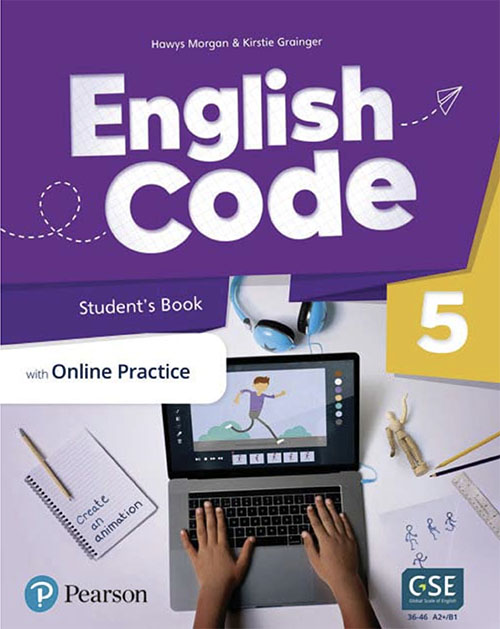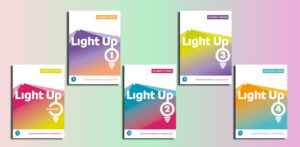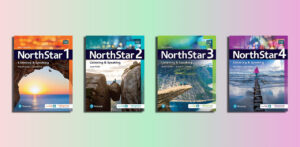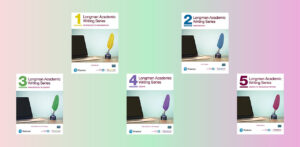English Code
Level 1
English Code 1 Class Audio (American).rar
English Code 1 Phonics Book Audio (American).rar
English Code 1 Phonics Book Video (American).rar
English Code 1 Student’s Book (American).pdf
English Code 1 Teacher’s Edition (American).pdf
English Code 1 Workbook (American).pdf
English Code 1 Activity Book Audio.zip
English Code 1 Assessment Book Audio.zip
English Code 1 Assessment Book.pdf – Sample: Click
English Code 1 Class Audio.zip
English Code 1 Flashcards.zip
English Code 1 Grammar Book.pdf – Sample: Click
English Code 1 Phonics Book Audio.zip
English Code 1 Phonics Book Video.zip
English Code 1 Phonics Book.pdf – Sample: Click
English Code 1 Teacher’s Edition.zip
Level 2
English Code 2 Class Audio (American).rar
English Code 2 Student’s Book (American).pdf
English Code 2 Teacher’s Edition (American).pdf
English Code 2 Activity Book Audio.zip
English Code 2 Activity Book.pdf – Sample: Click
English Code 2 Assessment Book Audio.zip
English Code 2 Assessment Book.pdf
English Code 2 Class Audio.zip
English Code 2 Flashcards.zip
English Code 2 Grammar Book.pdf
English Code 2 Phonics Book Audio.zip
English Code 2 Phonics Book Video.zip
English Code 2 Phonics Book.pdf – Sample: Click
English Code 2 Teacher’s Edition.zip
Level 3
English Code 3 Class Audio (American).rar
English Code 3 Student’s Book (American).pdf
English Code 3 Teacher’s Edition (American).pdf
English Code 3 Activity Book Audio.zip
English Code 3 Activity Book.pdf – Sample: Click
English Code 3 Assessment Book Audio.zip
English Code 3 Assessment Book.pdf
English Code 3 Class Audio.zip
English Code 3 Flashcards.zip
English Code 3 Grammar Book.pdf – Sample: Click
English Code 3 Phonics Book Audio.zip
English Code 3 Phonics Book Video.zip
English Code 3 Phonics Book.pdf – Sample: Click
English Code 3 Teacher’s Edition.zip
Level 4
English Code 4 Class Audio (American).rar
English Code 4 Student’s Book (American).pdf
English Code 4 Teacher’s Edition (American).pdf
English Code 4 Activity Book Audio.zip
English Code 4 Activity Book.pdf – Sample: Click
English Code 4 Assessment Book Audio.zip
English Code 4 Assessment Book.pdf
English Code 4 Class Audio.zip
English Code 4 Flashcards.zip
English Code 4 Grammar Book.pdf – Sample: Click
English Code 4 Phonics Book Audio.zip
English Code 4 Phonics Book Video.zip
English Code 4 Phonics Book.pdf
English Code 4 Teacher’s Edition.zip
Level 5
English Code 5 Class Audio (American).rar
English Code 5 Student’s Book (American).pdf
English Code 5 Teacher’s Edition (American).pdf
English Code 5 Activity Book Audio.zip
English Code 5 Activity Book.pdf – Sample: Click
English Code 5 Class Audio.zip
English Code 5 Flashcards.zip
English Code 5 Grammar Book.pdf – Sample: Click
English Code 5 Phonics Book.pdf – Sample: Click
English Code 5 Teacher’s Edition.zip
Level 6
English Code 6 Student’s Book (American).pdf
English Code 6 Teacher’s Edition (American).pdf
English Code 6 Activity Book Audio.zip
English Code 6 Activity Book.pdf – Sample: Click
English Code 6 Assessment Book Audio.zip
English Code 6 Assessment Book.pdf – Sample: Click
English Code 6 Class Audio.zip
English Code 6 Flashcards.zip
English Code 6 Grammar Book.pdf – Sample: Click
English Code 6 Phonics Book Audio.zip
English Code 6 Phonics Book Video.zip
English Code 6 Phonics Book.pdf – Sample: Click
English Code 6 Teacher’s Edition.zip
Starter Level
English Code Starter Class Audio (American).rar
English Code Starter Flashcards (American).pdf
English Code Starter Student’s Book (American).pdf
English Code Starter Teacher’s Edition (American).pdf
English Code Starter Workbook (American).pdf
English Code Starter Workbook Audio (American).rar
English Code Starter Class Audio.zip
English Code Stater Teacher’s Edition.zip
✅ Get English Code (Pdf, Resources): $6 for one level; $30 for all 7 levels
๏ Make the payment here: Click here
Overview of the “English Code”
Contents
| ✅ Coursebook: | English Code |
| ✅ Publisher: | Pearson |
| ✅ For: | Primary School |
| ✅ 7 Levels: | Pre A1, A1, A2, B1 |
| ✅ English type: | American English, British English |
| ✅ Publication year: | 2021 |
The “English Code” by Pearson is an innovative educational program designed for primary learners. This program uniquely combines English language learning with STEAM (Science, Technology, Engineering, Art, and Math) subjects, aiming to foster a coding mindset and enhance skills in problem-solving, collaboration, and creativity. Here’s an overview of the key aspects of the “English Code”:
Target Audience and Levels:
- Designed for primary learners.
- Available in both American and British English.
- Offers a comprehensive learning experience through 7 levels.
- Aligned with the Global Scale of English (GSE) ranging from 10 to 50 and the Common European Framework of Reference for Languages (CEFR) from Pre A1 to B1.
Course Content and Approach:
- Hands-on creative tasks, investigations, projects, and experiments form the core of the curriculum.
- STEAM activities stimulate curiosity and develop essential lifelong skills like adaptability, innovation, and forward-thinking.
- Emphasizes a coding mindset to encourage experimentation, resilience, and computational thinking.
- Focus on project work, critical thinking activities, and collaboration to improve presentation and listening skills.
Learning Outcomes:
- Students gain control and direction in their learning journey.
- Enhances presentation and listening skills, building confidence in speaking English.
- Learners engage in multidisciplinary education through STEAM lessons, which enhances their transferable English skills.
Connected English Learning Program:
- English Code is part of a larger program that includes assessment through the Benchmark Test – Young Learners and certification through Pearson English International Certificate – Young Learners.
- The course aims to fast-track learners’ progress in English proficiency.
Specific Features of English Code:
- STEAM lessons in each unit for an interdisciplinary approach.
- Video content to extend lessons.
- Project-based learning for a sense of control and direction.
- Critical thinking activities to develop analytical skills.
- Collaborative tasks to enhance communication skills.
- The curriculum is based on the Global Scale of English, providing clear learning objectives.
Materials and Resources:
- Student Book with structured lessons and self-assessment features.
- Workbook aligned with the Student Book’s objectives.
- Teachers’ Edition with digital resources, lesson flows, and support materials.
- Assessment Pack with tests covering vocabulary, structures, and skills.
- Pearson English Portal for lesson planning, activity preview, and teaching notes.
The English Code program is a comprehensive and innovative approach to language learning, integrating STEAM subjects and focusing on practical, real-world applications and skills development. It’s designed to prepare students not just for exams but for the challenges of a rapidly evolving future.
Who is suitable for ‘English Code’?
“English Code” by Pearson is particularly suitable for:
- Primary School Learners: The program is explicitly designed for children in primary education, typically aged 6 to 12 years. It is ideal for young learners at the start of their educational journey.
- Learners of Different English Proficiency Levels: With levels ranging from Pre A1 to B1 on the CEFR scale and 10-50 on the GSE scale, the program caters to a wide range of English language proficiency. It’s suitable for beginners as well as those who have already acquired some basic English language skills.
- Students Interested in STEAM Subjects: Children who show an interest in Science, Technology, Engineering, Art, and Math will find the STEAM-focused approach of English Code engaging and stimulating. It integrates language learning with these subjects, making it ideal for learners curious about the world around them and how things work.
- Young Learners with a Creative or Problem-Solving Mindset: The course is tailored for children who are creative, enjoy problem-solving, and are interested in projects and experiments. It encourages a coding mindset, which is beneficial for learners who like to experiment, innovate, and think critically.
- Students Seeking to Develop Collaborative Skills: English Code emphasizes collaboration, making it suitable for learners who benefit from or need to enhance their teamwork and communication skills.
- Learners Needing a Comprehensive English Language Program: The program is comprehensive, covering various aspects of language learning, including speaking, listening, reading, and writing skills. It’s suitable for learners who need an all-encompassing English language educational experience.
- Educators and Parents Seeking an Integrated Learning Approach: Teachers and parents looking for an educational program that combines language learning with critical thinking, creativity, and practical skills will find English Code appropriate for their children or students.
In summary, “English Code” is well-suited for primary-aged learners who are either beginning their English language journey or looking to deepen their existing knowledge, particularly those with an interest in STEAM subjects, creativity, and collaborative learning.
The benefits of ‘English Code’
“English Code” offers a range of benefits that make it an effective and engaging educational program for primary learners. These benefits include:
- Integrated STEAM Education: By combining English language learning with Science, Technology, Engineering, Art, and Math (STEAM), the program offers a holistic educational experience. This integration helps students apply their English skills in real-world contexts, making learning more meaningful and engaging.
- Development of a Coding Mindset: The program emphasizes a coding mindset, which fosters skills like logical thinking, problem-solving, and resilience. This approach is particularly valuable in today’s digital age, as it prepares students for future challenges and opportunities in technology and programming.
- Enhanced Problem-Solving and Collaborative Skills: Through its focus on hands-on tasks, projects, and experiments, English Code encourages students to think critically and work collaboratively. These skills are essential not only in academic settings but also in personal and professional life.
- Confidence in English Communication: With a clear focus on functional language, the program helps learners become more effective and confident in using English, both inside and outside the classroom. This is crucial for their overall language development and for opportunities in global contexts.
- Creativity and Innovation: The inclusion of Art in the STEAM approach, along with creative projects and tasks, stimulates students’ imagination and innovation. This aspect of the program helps in developing well-rounded individuals who can think out of the box.
- Cross-Disciplinary Learning: The STEAM lessons enable students to learn English through various subjects, which not only maintains engagement but also allows them to consolidate knowledge across different areas. This cross-disciplinary approach is effective in building a deeper understanding of the language and its applications.
- Building Future-Ready Skills: By focusing on critical thinking, collaboration, and project-based learning, English Code equips students with skills that are essential for success in the 21st century. These skills prepare them to adapt and thrive in a rapidly evolving world.
- Comprehensive Resource Material: The program provides a variety of materials including Student Books, Workbooks, Teachers’ Editions, and a Pearson English Portal. These resources offer structured learning, self-assessment tools, lesson planning, and support materials, making the learning process well-rounded and teacher-friendly.
- Alignment with Global Standards: English Code aligns with international standards such as the CEFR and GSE, ensuring that the learning objectives are globally recognized and relevant.
- Learner Autonomy and Self-Assessment: Features like the “Now I can…” reflections and self-assessment coloring in the Workbook encourage students to take charge of their learning and assess their progress, fostering a sense of independence.
In summary, “English Code” provides a comprehensive, interdisciplinary approach to language learning that not only enhances English language proficiency but also develops critical thinking, creativity, and essential 21st-century skills in young learners.
Effective teaching and learning strategies for ‘English Code’
To maximize the effectiveness of the “English Code” program, certain teaching and learning strategies can be particularly beneficial. Here are some strategies that align well with the program’s goals and structure:
- Project-Based Learning (PBL): Since “English Code” incorporates projects and experiments, using a PBL approach can be highly effective. This method encourages students to apply English in practical, real-world contexts, enhancing their understanding and retention. Projects can be both individual and group-based, promoting independent learning as well as teamwork.
- Incorporation of STEAM Elements in Lessons: Actively integrate STEAM (Science, Technology, Engineering, Art, and Math) subjects into English lessons. This could involve using scientific concepts, technological tools, engineering challenges, artistic creativity, and mathematical reasoning as mediums for teaching English. Such integration makes lessons more engaging and relevant.
- Interactive and Collaborative Activities: Encourage collaborative work where students can practice their communication skills in English. Group discussions, pair work, and team projects not only enhance language skills but also build teamwork and social skills.
- Coding and Computational Thinking: Given the emphasis on a coding mindset, incorporate basic coding exercises and computational thinking activities. These can be simple logic puzzles, coding games, or basic programming tasks that require students to use English to navigate and solve problems.
- Critical Thinking and Problem-Solving Exercises: Regularly include activities that require students to analyze, evaluate, and create. These could be in the form of puzzles, debates, or research projects. Encouraging students to question, hypothesize, and devise solutions in English deepens their cognitive skills along with language proficiency.
- Use of Digital Tools and Resources: Leverage the digital resources provided by the Pearson English Portal. This includes multimedia content, interactive activities, and online assessments that can complement traditional teaching methods and cater to different learning styles.
- Differentiated Instruction: Recognize the diverse learning needs and levels within a classroom. Adapt lessons to cater to different learning speeds and styles. This might involve providing more challenging tasks for advanced learners or additional support for those who need it.
- Real-World Connections: Make learning relevant by connecting it to real-world scenarios. This could involve discussing current events, exploring cultural aspects, or relating STEAM subjects to everyday life. Such connections make learning more meaningful and engaging.
- Language Immersion Techniques: Create an immersive English environment in the classroom. This could include using English in all communications, labeling objects in the classroom, and encouraging students to use English during interactions.
- Continuous Feedback and Reflection: Provide regular feedback on students’ progress and encourage self-reflection. The “Now I can…” feature in English Code is an excellent tool for this. It helps students assess their learning and set goals.
- Parental Involvement: Engage parents in the learning process, especially for younger learners. Share insights on the course and suggest ways parents can reinforce learning at home, perhaps through simple STEAM activities or English conversations.
By implementing these strategies, teachers can enhance the effectiveness of the “English Code” program, making English learning more interactive, relevant, and enjoyable for students.
Integrated English Learning Resources for Young Learners: Expanding Beyond STEM with Engaging Interdisciplinary Content
For learners seeking alternatives to the “English Code” series by Pearson, which is known for integrating English language learning with coding and STEM (Science, Technology, Engineering, and Mathematics) topics to engage young learners, there are several educational series that offer a mix of language learning with interdisciplinary content. Here are some notable series that provide engaging content and innovative approaches to learning English:
- “World Wonders” by National Geographic Learning: Combines English learning with fascinating content about the world, incorporating elements of science and geography to spark curiosity and engagement.
- “Our Discovery Island” by Pearson Education: A primary English series that uses a fun and engaging storyline along with characters to teach English, incorporating themes of exploration and discovery which can complement STEM learning.
- “Super Minds” by Cambridge University Press: This series enhances children’s thinking skills along with their English language proficiency. It integrates language learning with arts and crafts, science, and mathematics, encouraging creativity and problem-solving.
- “Science Adventures” by Connect Learning: Specifically designed to integrate English language learning with scientific exploration, this series engages young learners with exciting science topics and experiments, fostering both language and cognitive skills.
- “Primary i-Box” by Cambridge University Press: Although not a textbook series, this interactive whiteboard software includes activities and games that cover a range of subjects, including English, math, and science, suitable for young learners in a modern classroom.
- “Brainwave” by Macmillan Education: This series for young learners includes themes and content that touch on natural science, history, and the world, integrated with language learning to promote curiosity and critical thinking.
- “Island” by Scholastic: Offers a comprehensive English program with content that also delves into scientific inquiry and STEM subjects, designed to engage young learners with a blend of storytelling and factual exploration.
- “Discover English” by Pearson Education: Focuses on using English to explore the world, with content that naturally integrates with subjects like science and social studies, encouraging learners to use English as a tool for learning across disciplines.
- “STEAM Stories” by QED Publishing: This series introduces young readers to STEM and art concepts (STEAM) through story-driven learning. Each book focuses on a particular STEAM topic and incorporates language learning through engaging narratives and problem-solving scenarios.
- “English Explorer” by National Geographic Learning: While focusing more on language learning, English Explorer incorporates content from National Geographic, allowing learners to explore new topics, cultures, and ideas, thus indirectly supporting interdisciplinary learning with a strong emphasis on geography and science.
- “Oxford Discover” by Oxford University Press: Utilizing an inquiry-based approach, this series encourages students to think critically and communicate effectively in English, all while exploring the world around them through integrated science, math, and social studies content.
- “Collins International Primary English as a Second Language” by Collins Learning: This series is designed specifically for primary students learning English as a second language, integrating cross-curricular content that supports English language development alongside introductory concepts in science and math.
- “Link-Up to English” by Richmond Publishing: Targets young learners with a thematic approach that integrates language learning with topics from other school subjects, including simple scientific and mathematical concepts, to encourage comprehensive cognitive development.
- “Project Explore” by Oxford University Press: A series that encourages exploration and curiosity, Project Explore integrates language learning with a variety of subjects, including science and social studies, fostering a love for learning and discovery.
- “Skyrocket” by Scholastic: Designed to boost English language learning through engaging content and stories, Skyrocket introduces concepts from science and social studies to provide a rounded educational experience.
- “Leap into Literacy” by Cambridge University Press: Although primarily focused on developing literacy skills, this series incorporates diverse content that can spark interest in other academic areas, supporting integrated learning for young English language learners.
These series offer a variety of approaches to integrating English language learning with content from other academic disciplines, particularly STEM, to provide a holistic educational experience. They cater to young learners with different interests and learning styles, making them suitable alternatives to the English Code series for parents and educators looking to enrich their language learning curriculum.








































